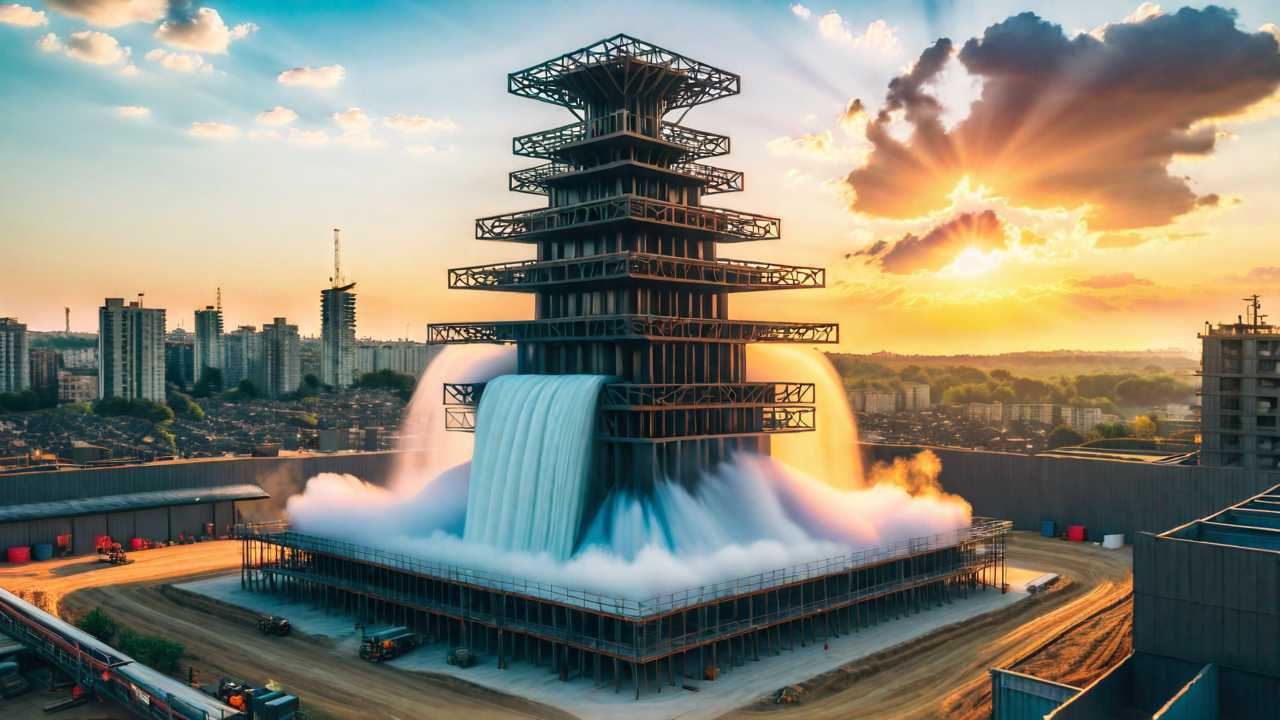Technology
What Are the Implications of 3D Printing in Construction?
3D printing is revolutionizing the construction industry by enhancing efficiency and fostering innovation. This technology allows for the creation of complex


As you investigate the implications of 3D printing in construction, you’ll unveil how this technology is reshaping traditional building methods. From enhancing efficiency to fostering innovation, 3D printing holds the potential to redefine the way structures are created. But what does this mean for the future of construction? The impact extends beyond mere functionality, paving the way for a new era of architectural possibilities. Stay tuned to discover how this disruptive technology is poised to transform the construction industry as we know it.
Advantages of 3D Printing in Construction
The utilization of 3D printing in construction offers significant efficiency gains in material usage and construction processes. By utilizing this advanced technology, construction companies can optimize material consumption by printing structures layer by layer, reducing waste and saving costs.
Additionally, 3D printing allows for the creation of complex and intricate designs that may be challenging or impossible to achieve through traditional construction methods. This opens up a world of possibilities for architects and engineers to push the boundaries of design innovation.
Moreover, 3D printing in construction streamlines the construction process by automating certain tasks that would otherwise be labor-intensive and time-consuming. This automation not only speeds up the construction timeline but also enhances precision and accuracy in building components.
The ability to create custom-made parts on-site reduces the need for transportation and storage of prefabricated elements, further increasing efficiency. Overall, the adoption of 3D printing in construction promotes sustainability, cost-effectiveness, and advanced design capabilities, positioning companies at the forefront of technological advancement in the industry.
Challenges in Implementing 3D Printing
Implementing 3D printing in construction poses various challenges that necessitate strategic solutions for successful integration into existing workflows. One key challenge is the need for essential training. Construction teams must acquire new skills to operate 3D printers effectively and troubleshoot any issues that may arise during the printing process.
Additionally, ensuring the compatibility of 3D printing materials with traditional construction materials is vital. This requires thorough testing to guarantee structural integrity and durability of printed components.
Another significant challenge is the scalability of 3D printing technology. While it offers the potential for rapid construction, current limitations in print size and speed can hinder large-scale projects. Overcoming these challenges involves investment in research and development to improve printer capabilities and optimize printing processes for efficiency.
Furthermore, regulatory hurdles and building code compliance present obstacles to widespread adoption of 3D printing in construction. Addressing these challenges requires collaboration between industry stakeholders and regulatory bodies to establish clear guidelines and standards for 3D printed structures. By strategizing solutions to these challenges, the construction industry can successfully harness the benefits of 3D printing technology.
Impact on Architecture and Design
Consider the profound influence that 3D printing technology has on shaping architectural and design practices. The impact of 3D printing in architecture and design is multifaceted.
One significant advantage is the ability to create complex geometric shapes with ease, allowing for innovative and intricate designs that were previously difficult or impossible to achieve using traditional construction methods. This technology offers architects and designers the freedom to experiment with unconventional forms and structures, pushing the boundaries of creativity.
Moreover, 3D printing enables rapid prototyping, facilitating the quick iteration of designs and reducing the time required to bring concepts to life. This iterative process allows for more efficient problem-solving and empowers architects to fine-tune their designs with precision.
Additionally, the customizable nature of 3D printing allows for personalized architectural elements tailored to specific needs or preferences, enhancing the overall functionality and aesthetics of structures.
Future Possibilities and Innovations
Exploring the forefront of construction technology, future possibilities and innovations in 3D printing hold promise for transforming traditional building methods. Advancements in 3D printing technology may lead to the development of more intricate and efficient building designs that were previously unattainable using conventional construction techniques. The integration of sustainable materials in 3D printing processes could innovate the industry by promoting eco-friendly practices and reducing waste production.
Furthermore, the potential for on-site 3D printing of structures could streamline construction timelines significantly. By eliminating the need for transporting prefabricated components to the site, 3D printing offers the possibility of constructing buildings rapidly and cost-effectively. This innovation could transform emergency response efforts by enabling the quick deployment of temporary shelters or structures in disaster-stricken areas.
Moreover, the concept of 3D printing entire communities or habitats showcases the pioneering potential of this technology in addressing housing shortages and providing affordable housing solutions on a large scale.
With ongoing research and development, the future of 3D printing in construction holds limitless possibilities for shaping the way we build and live in the built environment.
Frequently Asked Questions
Can 3D Printing in Construction Be Used for Eco-Friendly Building Materials?
In the realm of eco-friendly building materials, 3D printing in construction offers innovative solutions. By using sustainable materials like recycled plastics or natural fibers, it can reduce waste and energy consumption in building processes.
How Does 3D Printing Affect the Safety and Durability of Structures?
In terms of the safety and durability of structures, 3D printing acts as a vigilant guardian, meticulously crafting each layer with precision and strength, akin to a master craftsman shaping a masterpiece.
What Are the Regulations and Permits Required for 3D Printed Buildings?
To guarantee compliance, you must obtain permits for 3D printed construction. Regulations vary by location and may involve building codes, safety standards, and environmental considerations. Working closely with local authorities is essential for successfully managing this process.
Are There Limitations to the Size and Scale of 3D Printed Structures?
When considering the size and scale of 3D printed structures, it’s crucial to account for the printer’s build volume limitations. Understanding these constraints helps guarantee successful production and adherence to design specifications throughout the construction process.
How Does 3D Printing Impact the Traditional Construction Workforce?
In the field of construction, 3D printing reshapes the workforce. Skilled labor broadens to welcome technology. Adapt or risk obsolescence. Welcome innovation to stay relevant in changing times. Your role evolves; seize opportunities.


Hello! I’m Roger Jenkins, your go-to source at ReportingTheNews.com. I’m a USC graduate who combines journalistic precision with a Trojan’s passion. Based in sunny Los Angeles, my days are filled with more than just sunshine; they’re about capturing stories that resonate.
Beyond the newsroom, I’m an avid triathlete. Swimming, cycling, and running are more than just sports to me; they embody my commitment to discipline, focus, and a healthy dose of competition.
My love for travel takes me far and wide. Guadalajara, with its vibrant culture and unforgettable tacos, has a special place in my heart. I’m always searching for the next great story or a hidden culinary treasure.
At home, Nala, my energetic pet, is my constant companion. Together, we’re known in our neighborhood for our morning runs and evening strolls.
I’m driven by a belief in the power of storytelling to unite communities. Join me as we explore impactful narratives and stay updated with the latest news. You’ll also get a peek into my sports passions and travel escapades.
Want to get in touch? Follow me on Instagram for more insights and updates.

